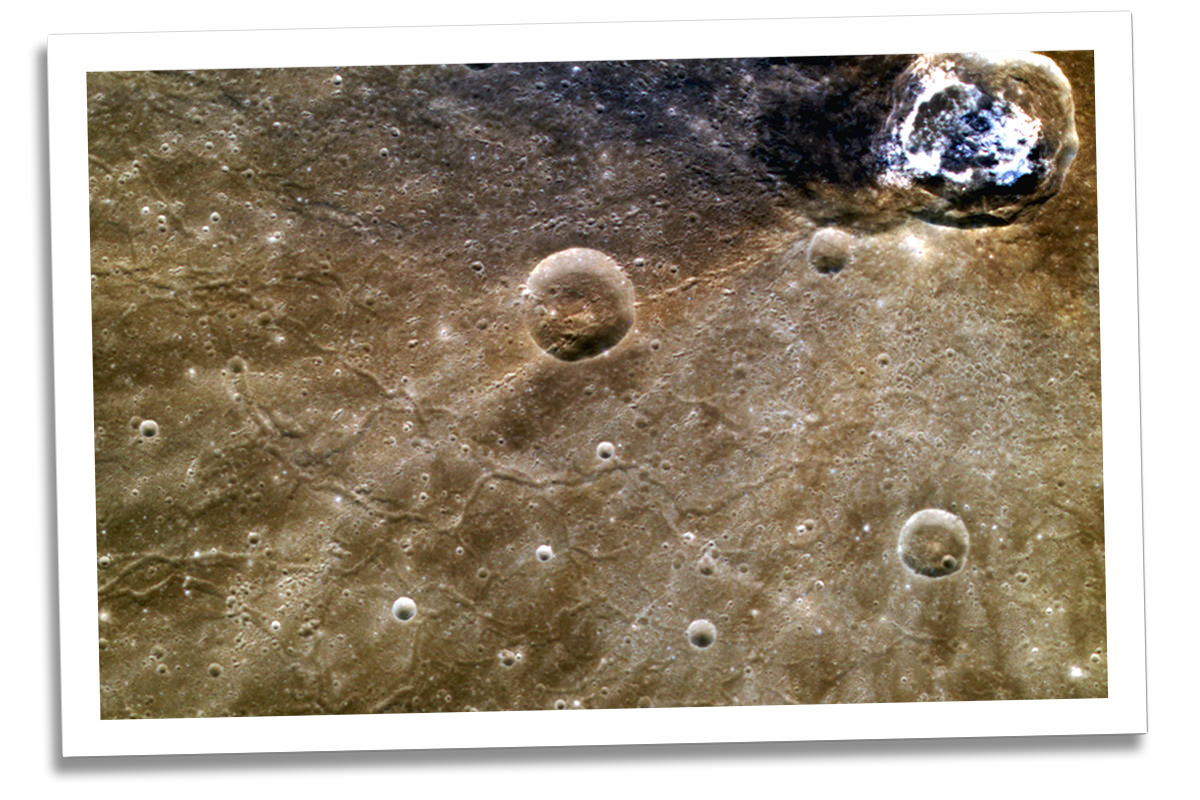As the world turns its gaze outward in anticipation of the arrival of Mars Science Laboratory — with its hair-raising “seven minutes of terror” landing — let’s take a moment to look back inward, where MESSENGER is still faithfully orbiting the first rock from the Sun, Mercury, and sending back images that could only have been imagined just a few years ago.
The image above shows the graben-gouged terrain around Balanchine crater, within Mercury’s vast Caloris Basin impact crater. Named for the co-founder of the New York City Ballet, Balanchine crater is 41 km (25.5 miles) in diameter and filled with the curious erosion features known as hollows. Graben — basically sunken troughs in the surface — are the result of extensional forces that have pulled sections of the planet’s upper crust apart.
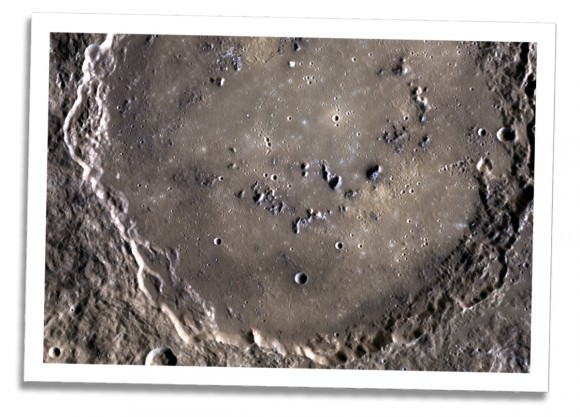
This image shows the peak-ring structure located within the much larger crater Rustaveli, which is 180 km (112 miles) in diameter. One of the more recently-named craters (the IAU convention for new features on Mercury has them titled after renowned artists, writers and composers from history) Rustaveli is named for a 12th-century Georgian poet who wrote the epic “The Knight in the Panther’s Skin”. The crater that now bears his namesake is located on Mercury’s northern hemisphere.
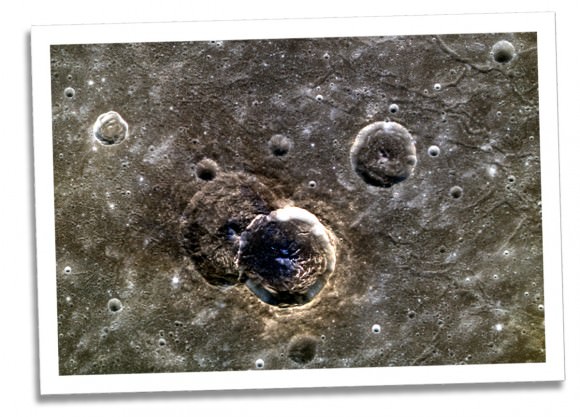
These two craters — also located within Caloris Basin — don’t yet have names but are no less interesting. Their overlapping positions works like an optical illusion, making the newer,sharper-edged crater on the right seem to almost float above the surface. The false-color of the image highlights the difference in surface composition of the two craters, which are both about 40 km (24 miles) wide. (The Caloris Basin in which they reside, however, is one of the largest known impact sites in our solar system, measuring at 1550 km — 963 miles — across!)
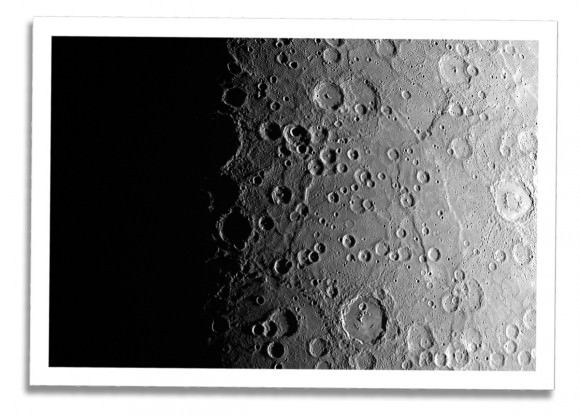
Now we zoom out for a wider view of our solar system’s second-densest planet (Earth is the first) and take a look at an image that’s night and day — literally! This is Mercury’s terminator, the twilit dividing line between night and day. More than just making a pretty picture, data on this transition is valuable to scientists as some atmospheric phenomena can only be observed at the terminator, such as the interaction between surface dust and charged particles from the Sun (which, at less than half the distance to the Sun than we are, Mercury is constantly bathed in.)
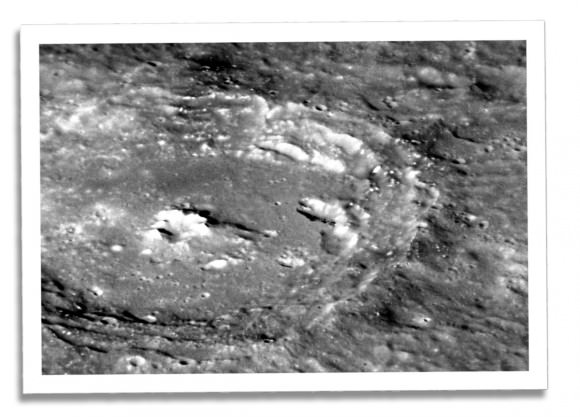
And now to zoom back in, we get a good look at an unnamed central-peaked crater about 85 km (52 miles) across in an oblique view that highlights the hollows and depressions within its floor. Acquired as part of what’s called a “targeted observation”, high-resolution images like this (79 meters/pixel) allow scientists to closely investigate specific features — but sadly there’s just not enough mission time to image all of Mercury at this level of detail.
On March 17, 2011 (March 18, 2011, UTC), MESSENGER became the first spacecraft ever to orbit Mercury. The mission has provided the first data from Mercury since Mariner 10, over 30 years ago. After over 1,000 orbits, 98 percent of Mercury is now imaged in detail, allowing us to know more about our solar system’s innermost world than ever before.
Keep up with MESSENGER updates (and the latest images) on the mission website here.

